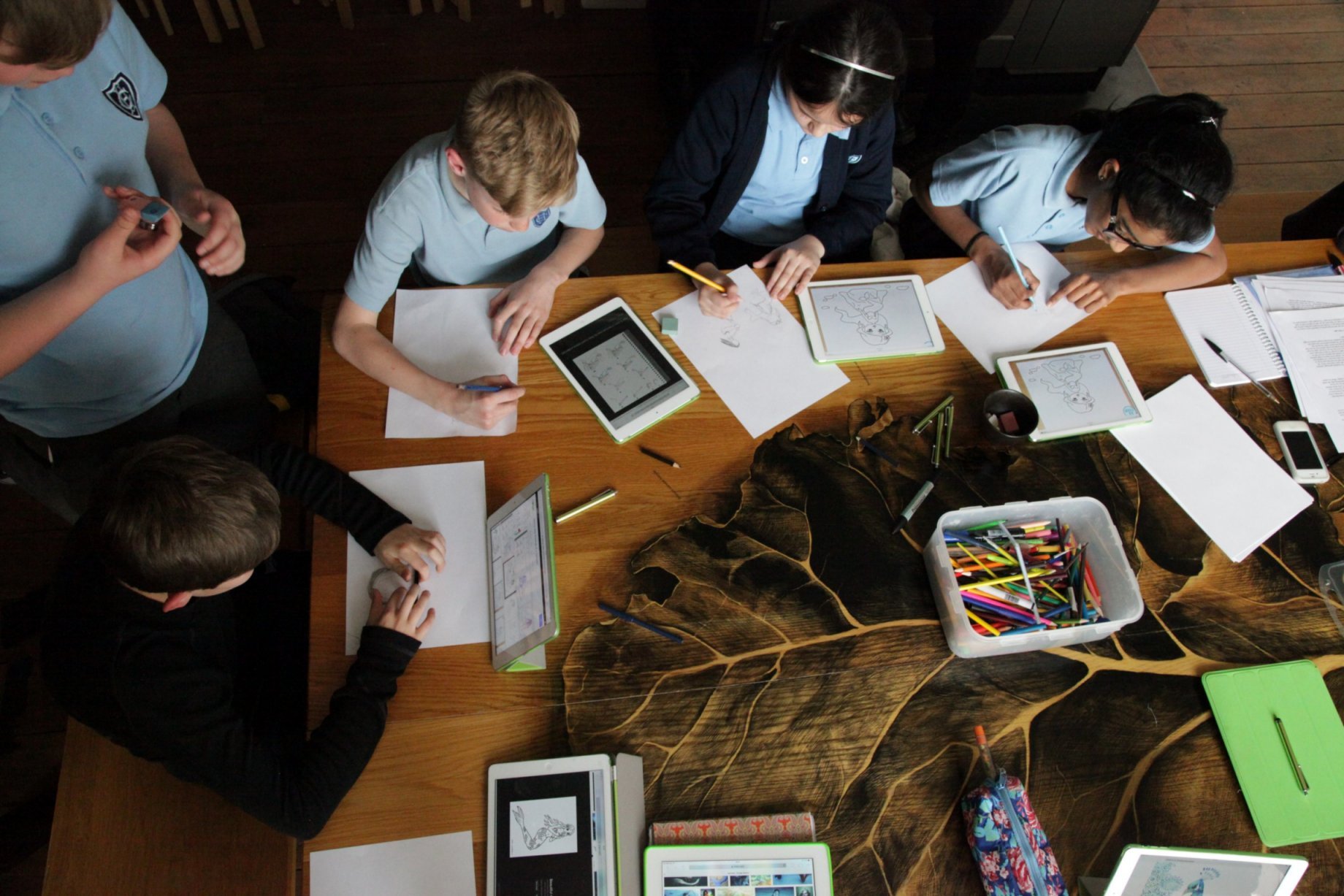
Children use technology at Metal's Netpark in Southend
Upwardly mobile
The arts sector is not adopting mobile technology fast enough, says Tim Plyming, who sees it being used not just to sell tickets but to enhance the visitor experience.
Ofcom says that by the end of this year two thirds of the UK population will own a smartphone. For many people their smartphone is a constant companion, providing access to an array of content on the move and at any hour. But in spite of these figures, research from the Digital R&D Fund for the Arts shows that almost half (45%) of arts organisations still don’t have a web presence optimised for mobile, trailing other sectors that have long seized the opportunity.
Only recently, Shop Direct, owner of digital department stores Littlewoods and Very, announced a 78% increase in annual profits powered by strong sales from mobile devices. M&S has also just launched its ‘mobile-first’ Christmas campaign saying that it expects mobile to be the primary driver of customer engagement, with an expectation that three quarters of the UK population will make at least one purchase through digital channels.
If we want to encourage people to buy our tickets, make donations or recommend our work or venues to others, we have to make it as easy as the retailers do
What does this mean for the arts and cultural sector? Mobile developments are changing the nature of customer engagement and the arts sector should ignore them at its peril. If we want to encourage people to buy our tickets, make donations or recommend our work or venues to others, we have to make it as easy as the retailers do.
But there is more to it than that. Mobile offers a real potential to deliver arts and cultural organisations’ missions better, faster and also cheaper in the medium to long term. And there is a real public-value story in this. Museums are a particularly interesting case. Budgets are hugely under pressure and some day-to-day challenges remain, such as the cost of preserving for the nation objects that can’t all be displayed, often within buildings that are complex for visitors to navigate, with interpretative material geared to general not personal interests. Some museums within the Digital R&D Fund portfolio are now demonstrating with real success how careful and creative use of mobile devices in people’s hands can tackle these problems, make better use of collections and create deeper, more rewarding and personalised cultural experiences.
Like other museum and heritage sites, Leicester’s Arts and Museums Service cannot cover the full costs of a personal presence to help visitors understand and appreciate their visit to Leicester Castle and opportunities for interpretation signage are limited. It recently completed a year of R&D with partners at the University of Leicester and tech partner Locly to explore how Bluetooth low energy (BLE) devices could be used with people’s mobile devices to make visits more fulfilling. Detailed research now shows the positive impact. Visitors engaging this way spend longer at the castle: an average of 48 minutes compared to 38 minutes for non-users. They were also more likely to say their visit was excellent and that they learned a great deal from the experience.
It is not just museums that can benefit. The newly created Netpark in Chalkwell Park in Southend, a collaboration between Metal, the University of Brighton and tech partner Calvium, is redefining the park experience. Free public wifi is helping to create a new digital layer by placing locative media works in several zones of the park. Visitors can move seamlessly between checking their messages, browsing the internet and enjoying art – all facilitated through a mobile device. Giving the audience the opportunity to choose when and where to engage is a really important part of the mobile offer.
There are challenges for the sector in adopting mobile more widely. For those just getting started it can seem like a minefield, especially given the speed at which technologies are developing – choosing what devices to optimise for, thinking about both backwards and forwards compatibility for the different operating systems, planning for upgrades and maintenance. Planning and delivering content, at least in the early stages, can be time-consuming. But the pay-off in terms of delivering an organisation’s mission can be significant. What’s more, as mobile is being deployed it is collecting data all the time about how much and how satisfactorily audiences and visitors are engaging. It doesn’t require staff with clickers and clipcharts observing individual visitors, but instead automates some of those processes, potentially making them less labour-intensive. This data in itself becomes a major asset when describing how well organisations are performing and what they are delivering for the public.
Tim Plyming is Director of Digital Arts and Media at Nesta.
www.nesta.org.uk/areas-work/digital-arts-and-media
This article, sponsored and contributed by the Digital R&D Fund for the Arts, is one in a series of articles on the theme Making digital work.
Join the Discussion
You must be logged in to post a comment.